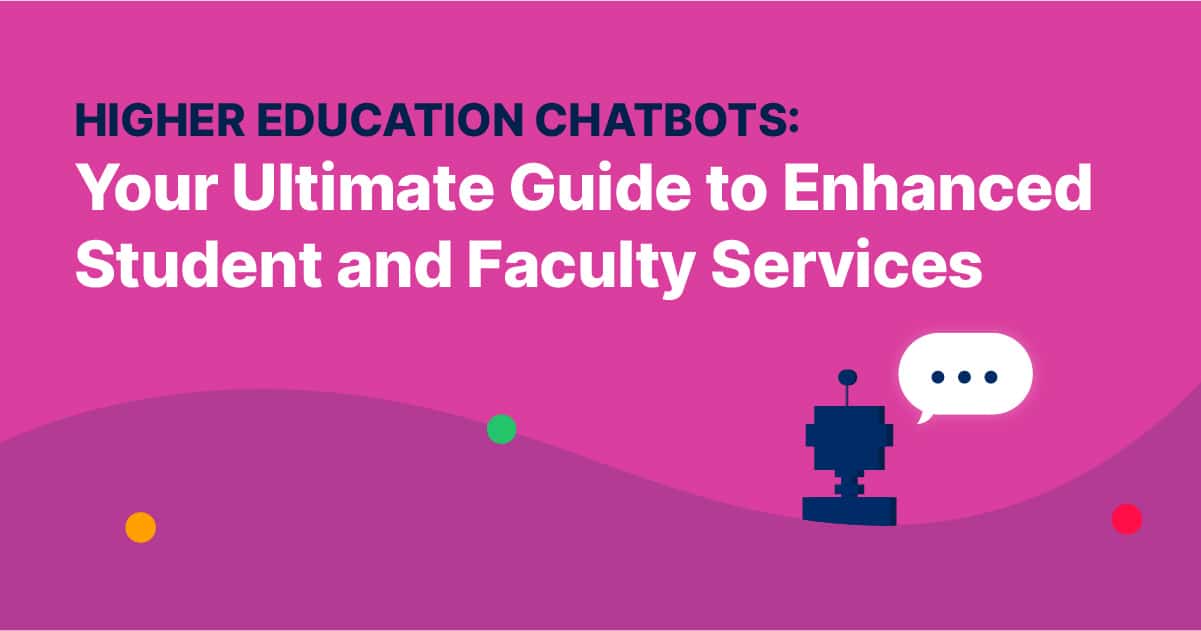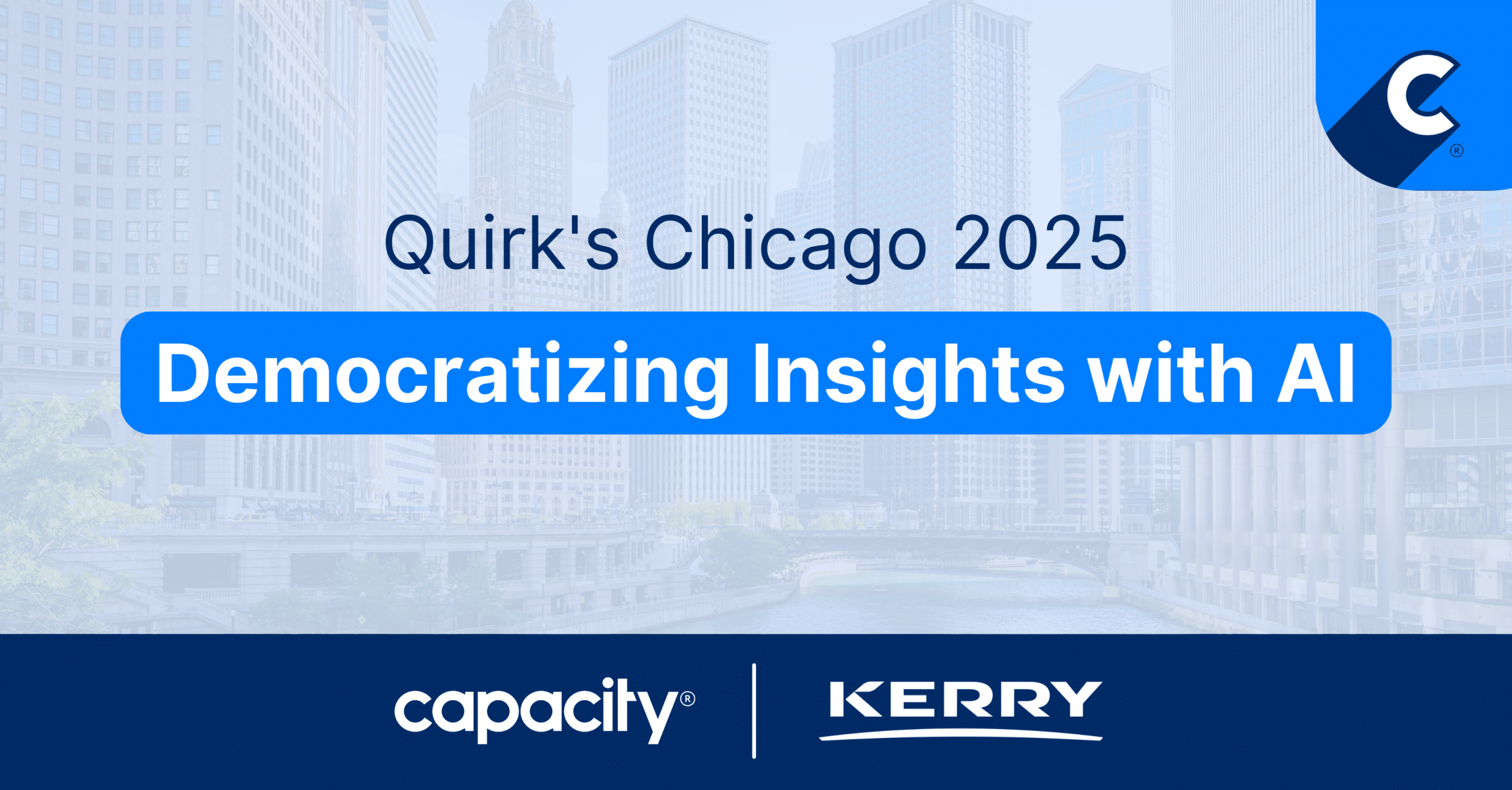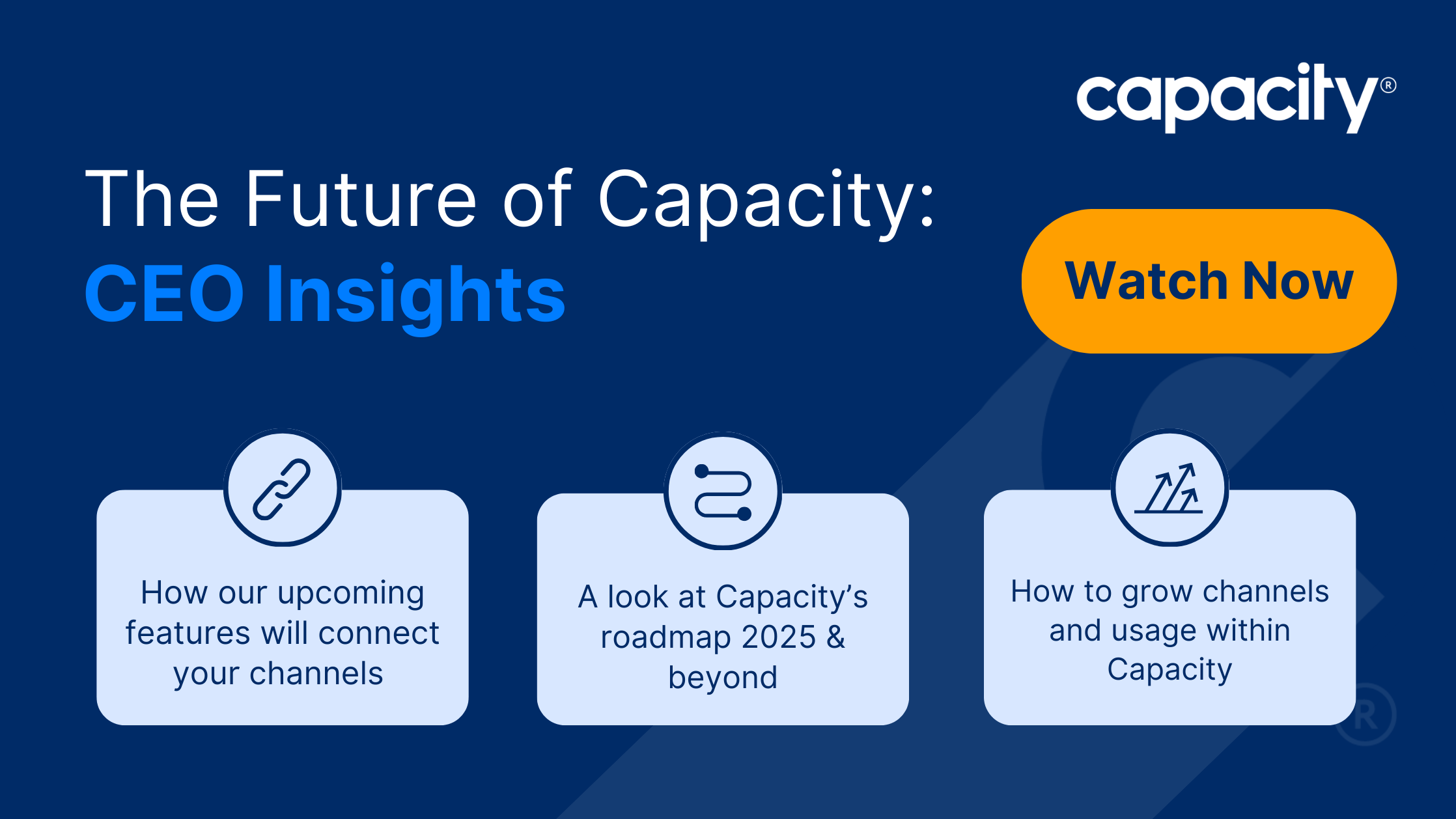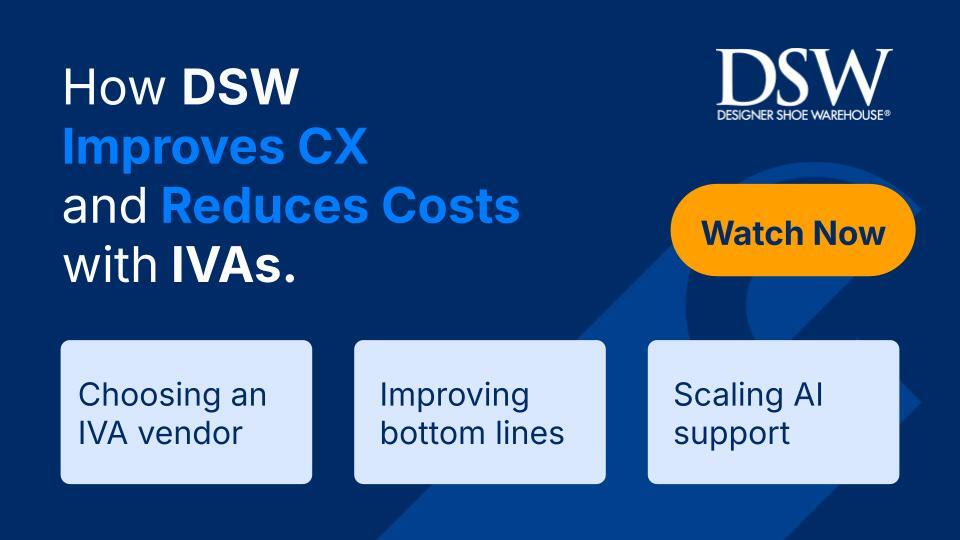In the digital transformation era, educational institutions are exploring new ways to enhance student and faculty services. One such innovation is using higher education chatbots designed to provide automated support and assistance to users.
In this article, we will discuss a higher education chatbot, how AI chatbots improve student and faculty support, some use cases of higher education chatbots, and the best chatbots for higher education.
What is a Higher Education Chatbot?
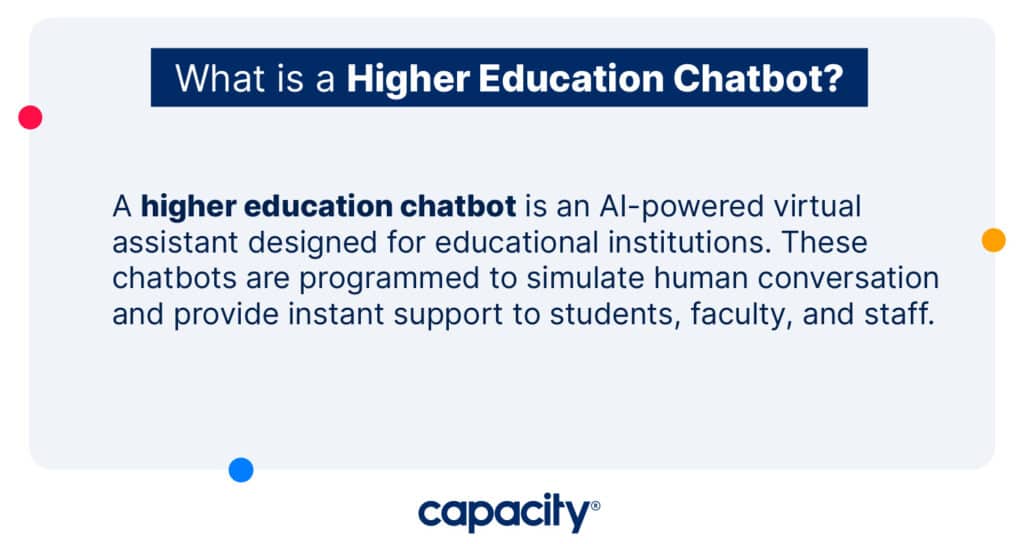
A higher education chatbot is an AI-powered virtual assistant designed for educational institutions. These chatbots simulate human conversation and provide instant support to students, faculty, and staff. They can answer common questions, provide personalized guidance, and perform administrative tasks.
How AI Chatbots Improve Student and Faculty Support?
AI chatbots are becoming increasingly popular in educational institutions as they offer several benefits that can significantly improve student and faculty support.
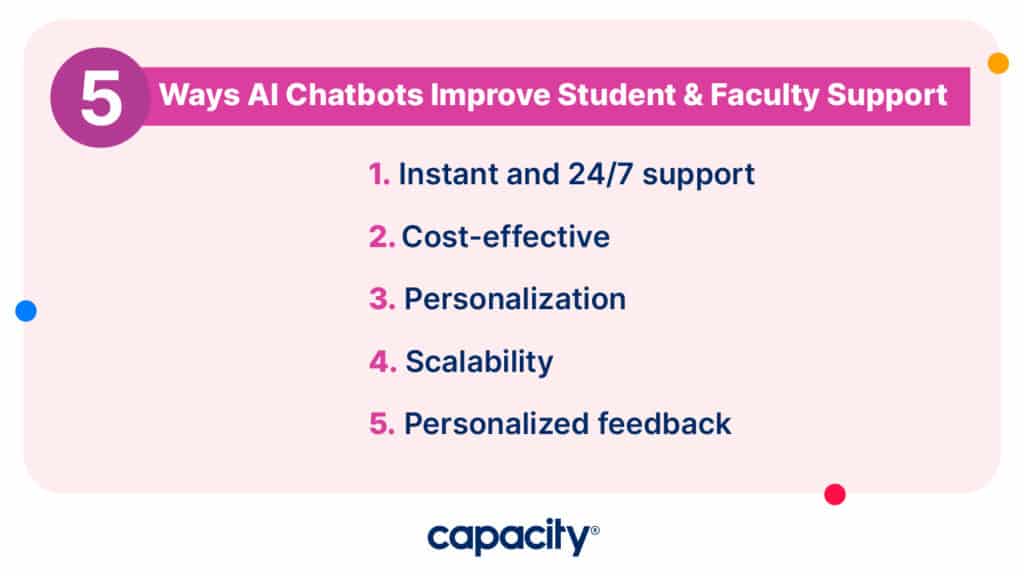
Here are some ways AI chatbots improve support in higher education:
Instant and 24/7 support
One of the most significant advantages of using AI chatbots in higher education is that they offer instant and 24/7 support. These chatbots can:
- Answer common questions or concerns
- Help future and current students navigate the school’s website
- Provide information on class schedules, academic deadlines, and more
- Gather resources such as how to file for financial aid
Cost-effective
Chatbots can help reduce the cost of hiring additional support staff. By automating routine tasks and inquiries, institutions can allocate resources to more complex issues and support students and faculty more effectively.
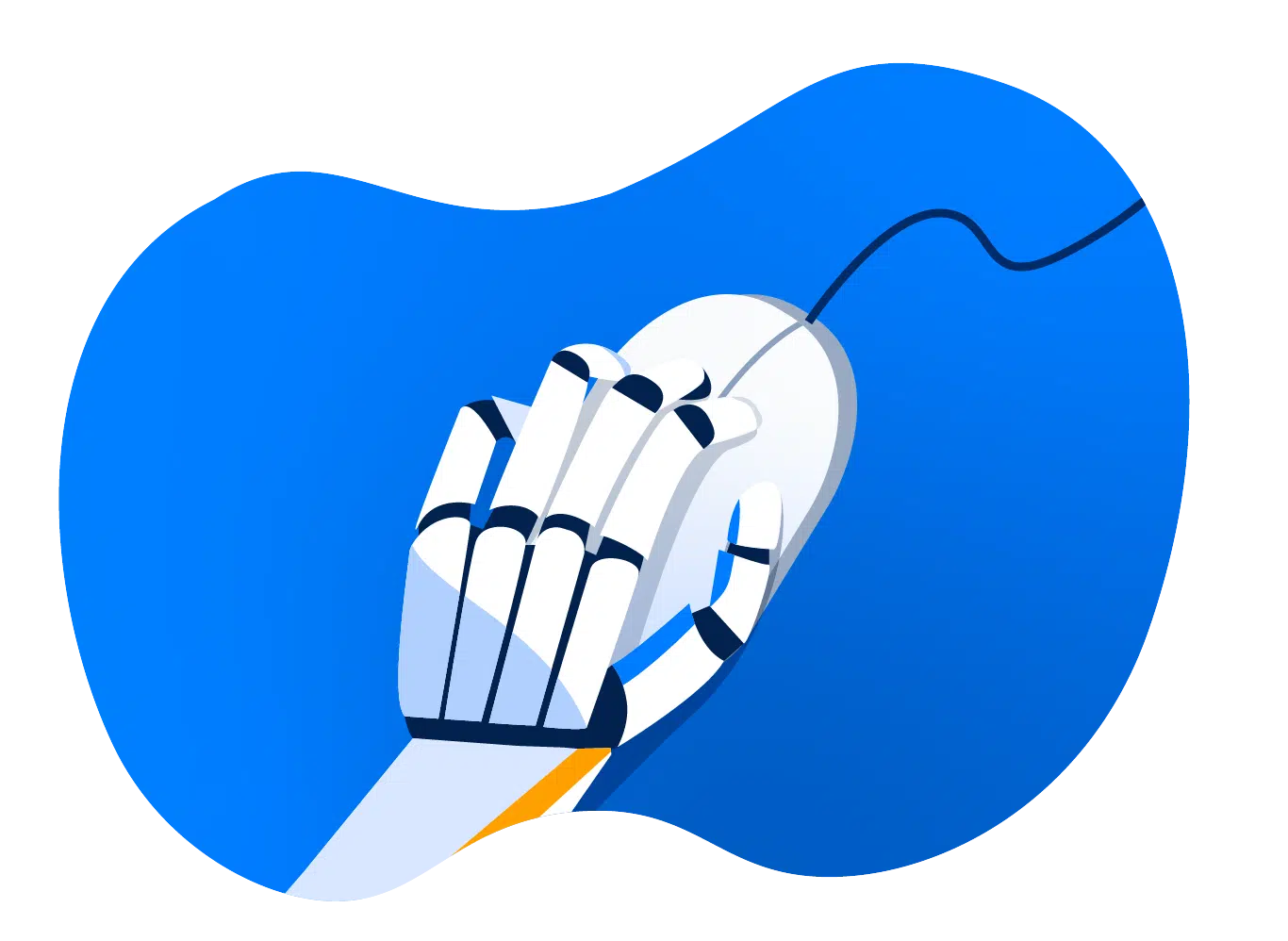
Automate Your Work
Capacity’s enterprise AI chatbot can help:
- Answer FAQs anytime, anywhere
- Find relevant documents within seconds
- Give surveys and collect feedback
Personalization
AI chatbots can personalize the support experience for each user based on their unique preferences and behavior. This is possible through data analysis and natural language processing, which allow chatbots to tailor their responses to specific users.
Scalability
Chatbots can simultaneously handle many inquiries and tasks, making them scalable for educational institutions. This is especially helpful during peak periods, such as enrollment or exam times, when the demand for support services increases.
Personalized feedback
AI chatbots can provide personalized feedback and suggestions to students on their academic performance, giving them insights into areas they need to improve. This feedback can help students improve their performance and achieve their educational goals.
Higher Education Chatbot Use Cases
Higher education chatbots can be used in various ways to improve the overall experience of students and faculty. Here are some of the most common use cases for chatbots in higher education:
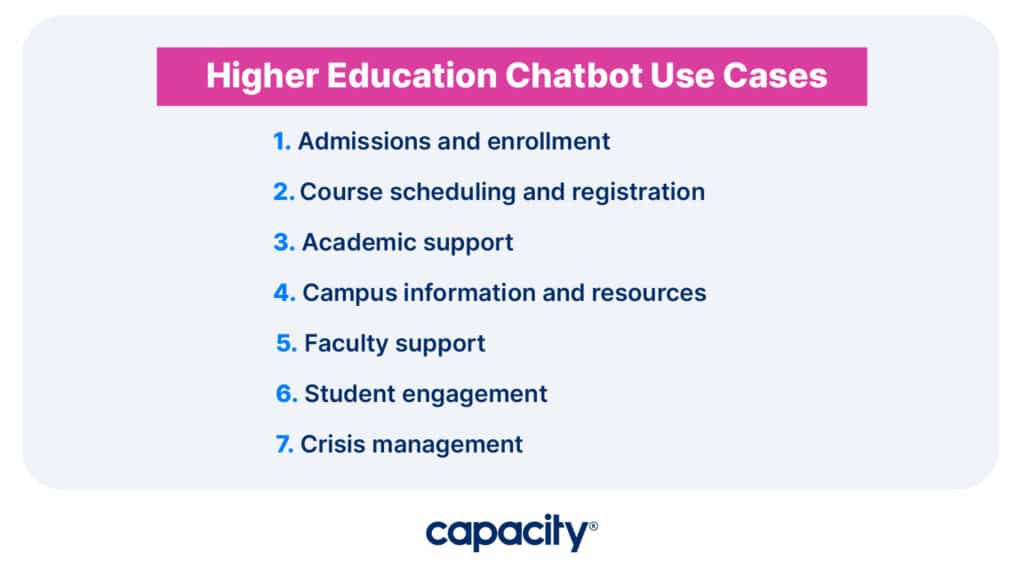
Admissions and enrollment
Chatbots can help students navigate the admissions and enrollment process, providing information on application requirements, deadlines, and procedures. They can also provide information on campus tours, program offerings, and financial aid opportunities.
Course scheduling and registration
Chatbots can assist students with course scheduling and registration, providing information on course availability, prerequisites, and class schedules. They can also help students select courses based on their interests and academic goals.
Academic support
Chatbots can provide academic support to students, such as answering questions on coursework, providing resources for research and study, and offering feedback on assignments. Chatbots can also assist with scheduling tutoring sessions or connecting students with academic advisors.
Campus information and resources
Chatbots can inform students about on-campus resources such as library hours, student services, and campus events. They can also assist with campus navigation, providing directions to buildings and facilities.
Faculty support
Chatbots can support faculty members by answering questions on course management systems, providing information on campus policies, and assisting with administrative tasks. Chatbots can also help with scheduling appointments with colleagues or booking classroom space.
Student engagement
Chatbots can facilitate student engagement by offering personalized recommendations for clubs, organizations, and events based on students’ interests and goals. They can also provide information on extracurricular activities, sports teams, and volunteer opportunities.
Crisis management
Chatbots can provide information on emergency procedures, such as lockdowns or evacuations, and offer guidance on reporting incidents such as sexual harassment or mental health concerns.
Using AI chatbots, educational institutions can provide personalized, accessible, and efficient support services that improve student outcomes and satisfaction.
Implementing a Higher Education Chatbot: Best Practices
Implementing a higher education chatbot can be a complex process that requires careful planning and execution. Here are some best practices to consider when implementing a chatbot in a higher education setting:
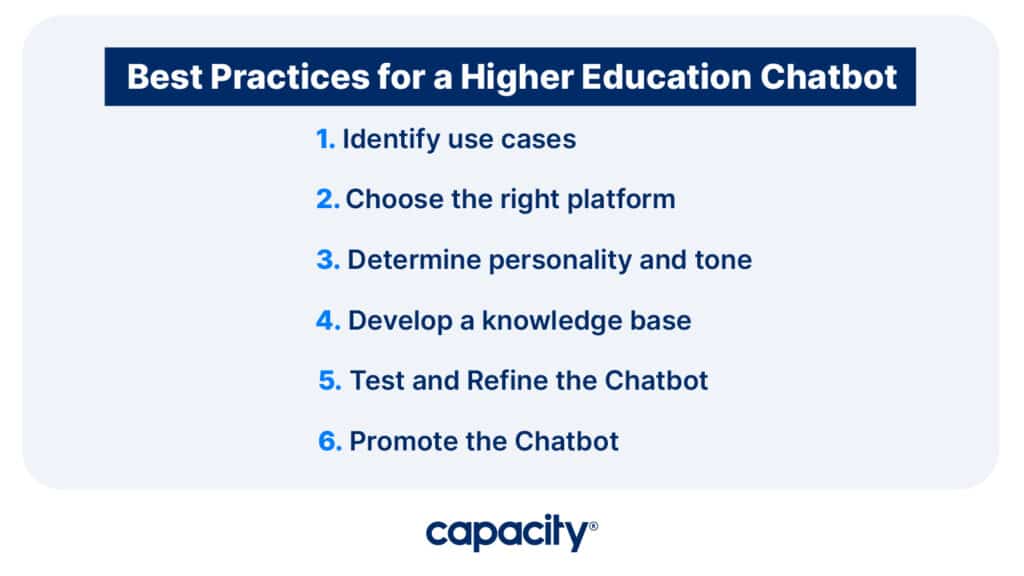
Identify use cases
Before implementing a chatbot, it’s crucial to identify the specific use cases that the chatbot will address. This will help ensure that the chatbot meets the needs of students and faculty and provides valuable support services.
Consider conducting surveys or focus groups to gather input on what services or information students and faculty would like to see provided through the chatbot.
Choose the right platform
Selecting the right platform is crucial when implementing a chatbot. Several chatbot development platforms are available, and choosing one that aligns with the institution’s specific use cases and goals is important. Factors to consider: The platform’s features, integrations, and scalability.
Recommended Platform: Capacity
Capacity is an AI-powered platform that automates support for EDU organizations. It streamlines student and faculty support tasks, answers inquiries, and helps solve challenges quickly and efficiently.

Automate Your Work
Capacity’s enterprise AI chatbot can help:
- Answer FAQs anytime, anywhere
- Find relevant documents within seconds
- Give surveys and collect feedback
Determine the chatbot’s personality and tone
When designing a chatbot, remember to consider its personality and tone. The chatbot should reflect the institution’s values and brand and be designed to communicate in a way that resonates with the target audience.
For example, a chatbot designed for college students may use casual language and humor, while a chatbot designed for faculty may be more formal and business-like.
Develop a comprehensive knowledge base
The success of a chatbot depends on its ability to provide accurate and helpful responses to users’ inquiries. To ensure the chatbot is equipped to handle various questions and scenarios, it’s important to develop a cohesive knowledge base. This can include information on policies and procedures, campus resources, and frequently asked questions.
Test and Refine the Chatbot
Once the chatbot is developed, it must be tested thoroughly to identify and address any issues or errors. Testing can involve manual and user testing, in which students and faculty provide feedback on their experience with the chatbot. Refining the chatbot based on user feedback and data analysis can help improve its effectiveness and user satisfaction.
Promote the Chatbot
Promoting it through various channels ensures that students and faculty know the chatbot and its capabilities. This can include social media, email newsletters, and the institution’s website.
In addition, train staff and faculty on how to use and promote the chatbot. This ensures it is widely adopted and utilized.
Best Chatbots for Higher Education
Capacity
Capacity is an AI-powered support automation platform that offers a low-code platform accessible through conversational AI. It connects your entire tech stack to provide answers to questions, automate repetitive support tasks, and build solutions to any business challenge.
Capacity aims to empower employees with access to information through a user-friendly knowledge base, a suite of app integrations, and a conversational interface.
The main Features include the following:
- An all-in-one helpdesk that answers over 90% of FAQs, reducing the number of tickets in the support team’s queue.
- Low-code workflows that automate monotonous processes and tasks, increasing productivity in cross-functional teams.
- A user-friendly knowledge base that empowers employees with access to information.
- Conversational AI interface that enables graceful human handoffs and intuitive task management.
- Robust developer platform and flexible database that can be deployed anywhere.
Ivy.ai
Ivy.ai is an AI-powered chatbot that is designed specifically for higher education institutions. It provides personalized assistance to students, staff, and faculty members. It answers questions, provides support, and offers guidance. Some of its key features include:
- Offers multilingual support, including English, Spanish, and French.
- Provides an AI-powered writing assistant that can help students improve their writing skills.
- Integrates with learning management systems (LMS) and other campus technologies to provide a seamless user experience.
Ada
Ada is an AI-powered chatbot that can be customized in higher education settings. The bot automates support services and provide personalized assistance to students and staff. Some of its key features include:
- Offers a conversational analytics dashboard that enables institutions to track and analyze user behavior.
- Provides a customer sentiment analysis feature that can help institutions monitor user satisfaction levels.
- A drag-and-drop interface allows institutions to create and customize chatbot workflows easily.
Ocelot
Ocelot is a chatbot platform that is designed specifically for higher education institutions. It is intended to provide personalized assistance to students, staff, and faculty members and can be used to answer questions, provide support, and offer guidance. Some of its key features include:
- Offers a mobile app that enables students to access support services on the go.
- Provides a virtual assistant feature enabling students to get personalized guidance on academic and non-academic topics.
- Offers a “nudge” feature that sends automated reminders to students about important deadlines and events.
We may be slightly biased, but don’t take our word for it! See how our friends at Maryville University use Capacity to streamline student and faculty support:
Ready to see the power of Capacity for yourself? Try it for free today!









































